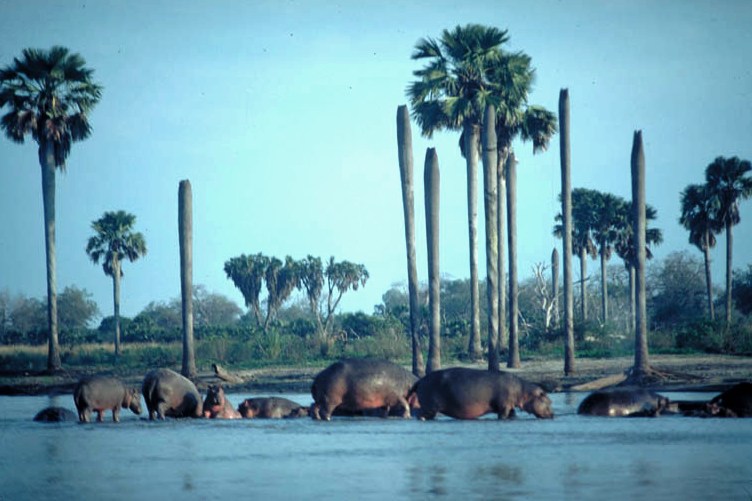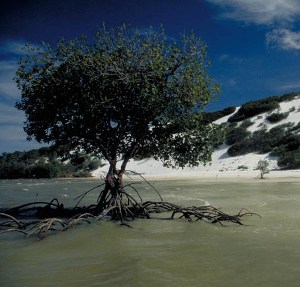Illegal trade puts more World Heritage sites in danger
Doha, Qatar, 18 June 2014 (IUCN) – Tanzania’s Selous Game Reserve has been listed as World Heritage in Danger due to unprecedented levels of illegal wildlife trade, as announced today at the 38th annual World Heritage Committee meeting in Doha, Qatar.
The decision, which aims to trigger international action to protect the site, follows the advice of IUCN – the official World Heritage advisory body on nature.
“Illegal wildlife trade and elephant poaching in particular remain at an alarmingly high level and Tanzania is one of the source countries that are most heavily affected by it,” says Tim Badman, Director of IUCN’s World Heritage Programme. “We hope that placing Selous on the List of World Heritage in Danger as well as Tanzania’s positive response to the decision will strengthen the international cooperation that is so urgently needed to tackle the problem and help the site recover its outstanding values.”
Elephant and rhino poaching, triggered by the international demand for ivory and rhino horn, continues to escalate in Selous, which is one of the largest remaining wilderness areas in Africa. Its elephant population dropped from 70,000 in 2005 to 13,000 in 2013, and a recent survey shows a decline of almost 90% compared to 1982, the year the site was inscribed on the World Heritage List. Selous’ black rhino population has also declined dramatically.
Despite IUCN’s recommendation, Thailand’s Dong Phayayen-Khao Yai Forest Complex has not been inscribed on the Danger List but will be considered for possible inscription next year. Illegal logging of Siamese Rosewood and other valuable timber species in the site has risen dramatically in the recent years, making it increasingly difficult for park officials to control it. The logging is carried out by armed gangs and often involves violent encounters with park staff. The site is internationally important for the survival and conservation of globally threatened mammals, birds and reptiles.
Also discussed at the meeting in Doha, Australia’s Great Barrier Reef faces a range of threats, including water quality impacts, climate change and proposals for coastal developments. The site will be considered for possible inscription on the World Heritage Danger List in 2015.
“Although we are very concerned about the range of threats within the Great Barrier Reef, we welcome the positive action being taken by Australia, which is expected to lead to a major new plan for the long-term protection of the Great Barrier Reef over the next year,” says Tim Badman. “This is one of the most iconic of all World Heritage sites, and the World Heritage Committee’s decision signals the exceptional level of international concern for its protection.”
IUCN’s recommendation to list Kenya’s Lake Turkana National Parks as ‘in danger’ will be discussed by the Committee tomorrow. This is the fourth consecutive year that IUCN has recommended danger-listing for this site due to a major dam construction and the development of large-scale irrigation schemes. The developments threaten not only the site’s natural resources but also local communities that depend on them for survival.
For more information or to set up interviews, please contact:
In Doha: Célia Zwahlen, IUCN World Heritage Programme Communications, m +974 305 33 889, celia.zwahlen@iucn.org
In Switzerland: Ewa Magiera, IUCN Media Relations, m +41 76 505 33 78, ewa.magiera@iucn.org





